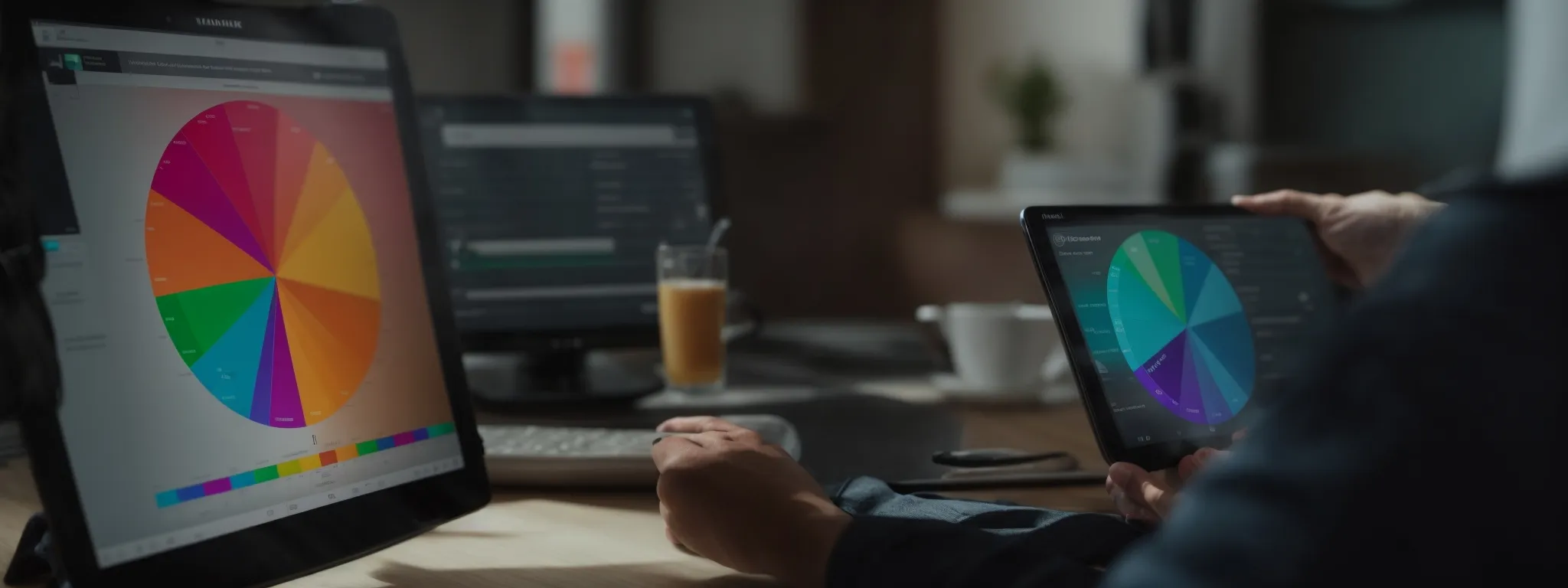Navigating Customer Segmentation
Mastering the Art of Navigating Customer Segmentation In the dynamic landscape of digital marketing, mastering customer segmentation stands out as an indispensable skill. It is the compass […]
In the dynamic landscape of digital marketing, mastering customer segmentation stands out as an indispensable skill.
It is the compass that guides marketing teams in tailoring their approach to resonate with distinct user segments, enhancing the customer journey and nurturing brand loyalty.
This practice not merely helps in pinpointing the target audience but also sharpens the precision of marketing messages across various channels.
From constructing a foundational customer segmentation model to deploying advanced analysis tools like SearchAtlas SEO software, the process demands both creativity and analytical prowess.
Keep reading to uncover the strategic pillars behind effective customer segmentation and how it fuels the engagement and conversion engines of modern businesses.
Key Takeaways
- Mastering Customer Segmentation Enhances Marketing Communications and Product Development
- Advanced Tools Like LinkGraph and SearchAtlas Assist in Harnessing Customer Data for Precise Targeting
- Clustering Methods and AI Integrations in Segmentation Lead to Hyper-Customized Marketing Strategies
- Key Performance Indicators (KPIs) Are Crucial for Evaluating the Success of Segmentation Strategies
- Consistency in Messaging Across Multiple Channels Strengthens Customer Perception and Brand Loyalty
Understanding the Foundations of Customer Segmentation

Embarking on the quest to decode the complexities of customer segmentation can be likened to cultivating a tailored garden.
Each plant—each customer, in context—thrives with personalized care, growth strategies, and the provision of the right nutrients, or in marketing terms, the most suited messages and channels.
Mastering customer segmentation underpins the bountiful harvest of marketing objectives, allowing organizations to nurture their customer base methodically.
By acquainting oneself with the fundamentality of segmenting users, companies lay the groundwork for a marketing strategy that aligns seamlessly with customer need, thus fostering brand loyalty and ultimately bolstering the bottom line.
As this discourse guides businesses through the bedrock principles of segmenting their audience, it will also illuminate the objectives driving this critical process, and the tangible benefits that a well-executed customer segmentation model ushers in.
Grasping the Basics of Customer Segmentation
In the realm of digital marketing, comprehending the essentials of customer segmentation equates to recognizing the diversity within a target market. An organization, by employing this approach, judicially categorizes its audience into definable groups based on characteristics such as demographic details, buying behavior, or even psychographic profiles, which include values and personality traits.
Such segmentation empowers a company to tailor its marketing campaigns with precision, ensuring that the messages disseminated resonate on a more personal level with each segment. This strategic focus garners a heightened customer experience, as individuals receive content that mirrors their specific interests and needs, boosting engagement and paving a path for enhanced customer loyalty.
Identifying the Objectives of Segmenting Customers
Objectives of customer segmentation pulsate at the heart of a tailored marketing strategy. At its core, this strategic initiative aims to allocate resources efficiently, maximizing the impact of marketing efforts by reaching the right buyer with a message that resonates.
Delineating customer segments effectively enhances a marketing team’s insight into their target audience’s pain points and preferences. This rich understanding fuels the development of products and services that are more likely to meet the nuanced demands of each customer segment:
- Heightened relevance in marketing communications, strengthening the connection between brand and consumer.
- Improved product development, guided by insights drawn from segment data.
- Increase in customer retention as a result of personalized customer experiences.
Recognizing the Benefits of Customer Segmentation
Navigating the intricate tapestry of customer segmentation extends a myriad of benefits to companies intent on optimizing their marketing campaigns. A detailed segmentation strategy enables businesses to launch ad campaigns that strike a chord with distinct customer groups, thereby enhancing conversion rates and maximizing the efficacy of resources invested in marketing channels.
A pivotal advantage of a nuanced customer segmentation process is its capacity to bolster customer retention rates, which is instrumental to sustaining a company’s market presence and nurturing brand loyalty. Organizations that leverage customer segmentation tools judaciously find themselves better positioned to anticipate and cater to evolving customer needs, leading to a resilient and thriving customer base.
Essential Steps to Develop a Segmentation Strategy

Pioneering a segmentation strategy prompts businesses to embark on a journey of meticulous planning and methodical execution.
By setting clear goals for segmentation, companies illuminate the path towards more targeted, impactful marketing communications.
This initial step requires the gathering of robust customer data, a process akin to assembling the pieces of a complex puzzle to form a comprehensive view of the audience landscape.
Following data acquisition, selecting the right criteria for segmenting customers becomes the crux of the endeavor, carving out meaningful groups that enable the launch of tailored marketing initiatives.
Each of these steps converges to form a tapestry of strategies that transforms how organizations interact with and serve their distinct customer segments.
Setting Clear Goals for Segmentation
Determining precise objectives at the inception of a segmentation strategy enables an organization to craft a clear vision for its marketing campaigns. The process involves prioritizing initiatives that drive direct engagement with distinct user segments, fostering an environment ripe for conversion and brand affinity.
By articulating specific goals, a company lays the keystone for a segmentation strategy that is both actionable and measurable. Goals such as enhancing the customer journey, increasing average order value, or cultivating brand loyalty become signposts that guide the marketing team’s concerted efforts.
Gathering Robust Customer Data
The journey to segmentation mastery commences with the acquisition of comprehensive customer data, the very foundation for meaningful market insight. This quest necessitates employing state-of-the-art tools such as LinkGraph’s SEO Content Assistant and SearchAtlas SEO software, which illuminate user behaviors and preferences through thorough analysis.
Employing these sophisticated instruments, organizations systematically capture a diverse array of customer segment data, from demographics to psychographics. Such granular insights serve as the compass guiding marketing teams to Custom-Tune Their Strategies, ensuring that each message delivered aligns impeccably with the individual profiles of their audience.
Selecting the Right Criteria for Segmenting Customers
Selecting the right criteria for segmenting customers is a critical step in crafting a tailored marketing approach that resonates with diverse user segments. This selection hinges on the intricacies of the target market, requiring a discerning eye toward factors such as consumer behavior, purchase history, and engagement levels. By zeroing in on these key attributes, a business ensures its marketing messages are not just heard but are impactful, encouraging meaningful interactions and conversions.
For a company, the rigor involved in choosing segmentation criteria is justified by the precision it brings to marketing campaigns. Embracing a tool like the Keyword Researcher tool from LinkGraph can prove invaluable, as it sheds light on the specific terms and phrases most relevant to each customer group. With this intelligence, marketing teams can orchestrate campaigns that effectively speak to the unique needs and interests of their audience, thus elevating the efficacy of their outreach.
Advanced Techniques in Customer Segmentation Analysis

As digital landscapes become more intricate and competitive, the sophistication of customer segmentation techniques must advance accordingly.
The robust analysis of segmentation data now delves into predictive analytics, artificial intelligence, and clustering methods, offering a more profound understanding of customer groups.
With a focus on leveraging such advanced methods, marketers are empowered to dynamically segment their audience, enrich the depth of their customer insights, and refine segments with unprecedented precision.
These tactics not only sharpen the accuracy of marketing campaigns but also transform the customer experience into something notably personalized and efficient.
Leveraging Predictive Analytics for Dynamic Segmentation
The use of predictive analytics in customer segmentation ushers in a new era where marketing foresight becomes a crucial competitive edge. Through the analysis of historical data and identification of trends, organizations refine their approach to segmenting audiences, ensuring that each marketing message is not only targeted but also anticipatory of future behaviors and needs.
LinkGraph’s SearchAtlas SEO software emerges as a pivotal tool in this realm by harnessing the power of predictive modeling to foresee potential shifts within user segments. This advanced technique enables a company to dynamically adjust its marketing strategies, staying one step ahead in meeting the evolving desires and expectations of its customer base.
Integrating AI for Deeper Customer Insights
Integrating artificial intelligence (AI) into the customer segmentation process revolutionizes the way organizations discern subtle nuances within their vast arrays of customer data. By deploying AI-powered tools like LinkGraph’s SEO Content Assistant, companies gain an unprecedented ability to analyze and understand the complex patterns of customer behavior and preferences, elevating the personalization of their marketing initiatives.
The potential of AI extends beyond mere analysis; it actively shapes the creation of customer personas by ingesting and processing segmentation data at an unparalleled rate. The result is an intricate, real-time portrait of each customer segment that empowers marketers to craft strategies and campaigns that are far more aligned with the dynamically changing contours of their target markets.
Utilizing Clustering Methods to Refine Segments
Clustering methods stand as a beacon of precision in the realm of customer segmentation analysis. By grouping customers based on the likelihood of similar reactions to marketing strategies, these sophisticated techniques enable marketers to deploy highly targeted campaigns.
- Identify the underlying patterns in customer behavior and preferences.
- Group similar customer profiles using clustering algorithms.
- Develop targeted marketing strategies for each cluster to maximize engagement and conversion.
This data-driven approach, often fueled by expansive datasets and SearchAtlas SEO software’s analytical prowess, allows businesses to distill actionable insights from complex customer datasets. The use of clustering goes beyond mere categorization; it unravels the essence of consumer dynamics, forging pathways to hyper-customized interactions.

In the intricate dance of mastering customer segmentation, professionals confront an array of challenges that can obscure the clarity of their marketing vision.
The risk of faltering under the weight of data quality issues threatens the integrity of customer segmentation analysis, while analysis paralysis looms as an all too common specter, potentially stalling progress.
Moreover, the dynamic nature of market segments can introduce overlap and fluidity, complicating the task at hand.
This segment of the discourse will equip diligent marketers with strategies to navigate these hurdles, ensuring they retain their footing in the ever-evolving landscape of customer segmentation.
Dealing With Data Quality Issues
Dealing with data quality issues stands as a formidable barrier in the pursuit of refined customer segmentation. Marketers must rigorously validate and clean their data, ensuring that the foundations upon which they construct their segmentation models are robust and reliable. This process is crucial; as incorrect or outdated information can lead to misguided marketing strategies that fail to engage the intended segments effectively.
As practitioners work to overcome these challenges, tools like LinkGraph’s SEO Content Assistant are indispensable, offering advanced features to aid in the identification and rectification of data discrepancies. Employing such digital marketing solutions enhances the accuracy of customer segmentation data, enabling marketers to confidently advance their campaigns with insights drawn from high-quality, actionable datasets.
Overcoming Analysis Paralysis
Overcoming analysis paralysis requires a decisive approach to decision-making within the customer segmentation process. Marketers can bypass the stagnation of excessive deliberation by integrating tools such as SearchAtlas SEO software, which offers streamlined and insightful data analysis, enhancing the speed and efficacy of segmentation decisions.
Professionals sidestep potential paralysis by setting actionable timelines for project milestones and regularly reviewing progress against these benchmarks. Utilizing LinkGraph’s digital marketing solutions, businesses can maintain momentum in their segmentation efforts, ensuring that ample time is spent on execution rather than getting mired in the minutiae of data.
Addressing Segment Overlap and Fluidity
Segment overlap and fluidity present unique challenges, with customers often transitioning between segments or fitting into multiple categories simultaneously. Marketers must craft flexible segmentation strategies that allow for such overlap, deploying dynamic and adaptable marketing solutions from the suite of tools provided by LinkGraph to address these complexities.
To manage the fluid nature of market segments, it becomes essential for a company to monitor customer behaviors continuously and adjust segments in real-time. Using LinkGraph’s advanced digital marketing solutions, organizations can swiftly respond to these evolving dynamics, ensuring that their engagement strategies remain relevant and reflective of the current state of their customer base.
Customization and Personalization Through Segmentation

In the odyssey to master customer segmentation, the apex of proficiency is realized when an organization can deploy customization and personalization with deftness and precision.
Within the tapestry of digital marketing, trailblazing companies are recognizing the power of sculpting tailor-made marketing messages, curating personalized product recommendations, and enhancing the user experience for each distinct segment.
This caliber of individualized attention not only satisfies the growing expectation for relevance but also elevates the bond between brand and buyer, ensuring that each interaction resonates profoundly with the nuanced desires of the customer.
Crafting Tailor-Made Marketing Messages
In the intricate fabric of digital marketing strategies, the precision with which a marketing team communicates with distinct segments stands as a testament to its understanding and empathy towards varied customer groups. By harnessing LinkGraph’s Suite of Tools, including the insightful Keyword Researcher tool, businesses adeptly construct marketing messages that resonate at a personal level, thus heightening the customer’s affinity for the brand.
Organizations elevate their marketing communications by deploying LinkGraph’s SearchAtlas SEO software, creating a synergy between customer data and content delivery that yields tailor-made messages. Such customization not only appeals directly to each segment’s unique characteristics and preferences but also reinforces the relevance and efficacy of every campaign launched, thereby fostering an environment ripe for increased engagement and loyalty.
Creating Personalized Product Recommendations
In the arena of customer segmentation, the ability to extend personalized product recommendations represents a pivotal edge in deepening customer engagements. Leveraging LinkGraph’s comprehensive suite, particularly its SEO Content Assistant, companies can analyze customer behaviors and preferences to recommend products that align closely with each segment’s unique patterns and interests.
This strategic application of customer data effectuates an elevated shopping experience, where customers encounter a selection of products meticulously curated to their tastes and needs. It is these personalized touches facilitated by tools such as SearchAtlas SEO software, that empower businesses to enhance customer satisfaction and drive sustained revenue growth.
Enhancing the User Experience for Each Segment
An organization’s dedication to fine-tuning the user experience for each segment demonstrates a commitment to addressing the distinctive expectations and requirements of its consumer base. By deploying sophisticated tools such as LinkGraph’s SEO Content Assistant, companies can cultivate a user-centric approach, designing experiences that are not only engaging but also richly satisfying to the individual needs of each target customer.
This strategic focus on segment-specific user experience wields the power to transform the generic into the exceptional. Integrating the analytical capabilities of SearchAtlas SEO software, for instance, allows businesses to extract nuanced insights that fuel the creation of user experiences tailored to captivate and retain the varying interests of their segmented audience, reinforcing brand loyalty and enhancing overall customer journey satisfaction.
Measuring the Success of Your Segmentation Efforts

At the zenith of leveraging customer segmentation, the true marker of a strategy’s potency is revealed in the ability to measure its effectiveness meticulously.
As professionals thread the needle of segmentation with deftness, pivoting their focus to quantifiable outcomes becomes paramount.
Inching closer to that end, the establishment of Key Performance Indicators (KPIs) stands as the beacon guiding this evaluative journey.
It is through these vital metrics that a team not only tracks but scrutinizes the implications each segmentation effort has on Return on Investment (ROI).
Adaptive in its nature, the segmentation framework is refined continuously based on performance feedback, ensuring that every strategic modification serves to heighten the acuity of marketing campaigns.
This agile methodology encapsulates the essence of success in the dynamic discipline of customer segmentation.
Defining Key Performance Indicators (KPIs)
In the discipline of digital marketing, precise definition of Key Performance Indicators (KPIs) is essential for gauging the impact of customer segmentation efforts. These indicators provide businesses with vital benchmarks to assess whether their segmentation strategies are generating the anticipated results, such as improved customer engagement, heightened brand loyalty, or increased revenue streams.
Organizations employing LinkGraph’s advanced digital marketing solutions can craft highly targeted KPIs to monitor the performance of their marketing campaigns. Utilizing tools like SearchAtlas SEO software enables companies to analyze traffic, conversion rates, and customer retention metrics, thereby delivering clear insights into the effectiveness of segmentation strategies and enabling data-driven adjustments for optimal outcomes.
Tracking and Analyzing the Impact on ROI
Assessing the impact of customer segmentation on Return on Investment (ROI) requires a meticulous approach, wherein businesses closely monitor performance against financial outcomes. By tracking key metrics that reflect profitability, such as customer acquisition cost and customer lifetime value, organizations can determine the financial efficiency of their segmentation initiatives.
An organization’s technological integration with tools like SearchAtlas SEO software underpins the strength of ROI analysis. This allows businesses to aggregate and scrutinize data reflecting the economic gains attributable to nuanced marketing strategies: increasing precision in targeting, messaging alignment, and campaign adjustments that drive conversion rates and foster sustained growth.
| Segmentation Metric | Pre-Segmentation | Post-Segmentation | Impact Analysis |
|---|---|---|---|
| Customer Acquisition Cost | $50 | $35 | 30% Decrease |
| Customer Lifetime Value | $400 | $550 | 37.5% Increase |
| Conversion Rate | 2% | 4% | 100% Increase |
| ROI | 120% | 200% | 66.67% Increase |
Adjusting Segments Based on Performance Feedback
Performance feedback reveals pivotal insights that drive the strategic recalibration of customer segments. Organizations refine their approach, redefining segments to ensure Marketing Efforts Resonate with dynamic consumer preferences and behaviors, thereby securing enhanced performance outcomes and customer alignment.
By harnessing the analytical capabilities of LinkGraph’s SearchAtlas Tools, marketers diligently assess and adjust their segmentation tactics. These data-driven revisions are instrumental for optimizing the relevancy of marketing messages, elevating effectiveness and tailoring experiences to the evolving landscape of customer needs.
Usage of Segmentation in Multi-Channel Marketing Strategies

In the virtuosic realm of digital marketing, the utilization of customer segmentation within multi-channel marketing strategies represents the zenith of personalized outreach and engagement.
As organizations endeavor to synchronize their segmentation strategies with an omnichannel approach, the coordination of messaging across platforms and the optimization of campaigns tailored to specific channels and segments become instrumental.
The following discourse delves into the nuance of aligning segmentation with these holistic marketing methods, charting a course for businesses to deliver a consistent and resonant brand narrative transcending multiple touchpoints and mediums.
Aligning Segmentation With Omnichannel Approaches
Integrating customer segmentation with an omnichannel marketing strategy elevates a brand’s capacity for cohesive customer experiences. This alignment ensures that each channel delivers harmonized content, tailored to the segmented needs and behavioral patterns of diverse customer demographics, thereby reinforcing brand consistency across every touchpoint.
By leveraging customer segmentation tools like LinkGraph and SearchAtlas, marketing professionals expertly navigate through myriad communication platforms, crafting bespoke messages that resonate with segmented audiences irrespective of the channel. This strategic approach not only amplifies reach but also fortifies the customer’s perception of the brand as attentive and personalized in its interactions.
Coordinating Messaging Across Platforms
Coordinating messaging across platforms necessitates a meticulous orchestration where consistency meets customization. It is imperative for businesses to convey a unified brand voice while catering to the diverse interests and behaviors of their customer segments across various marketing channels.
The strategic deployment of coordinated cross-platform messaging, supported by tools such as LinkGraph’s comprehensive analytics, ensures that each interaction a customer has with the brand reinforces a seamless narrative that is both relevant and resonant, irrespective of the digital medium they engage with.
Optimizing Campaigns for Each Channel and Segment
Optimizing campaigns across various channels and for each customer segment requires a granular approach where the nuances of medium and audience converge. LinkGraph and SearchAtlas facilitate this precision by enabling marketers to tailor their content and PPC strategies, ensuring that the voice and vision of the organization resonate uniquely within every channel’s context, driving engagement and bolstering conversions.
Recognizing that each channel has its distinct strengths and user expectations, companies leverage the adaptability provided by LinkGraph and SearchAtlas tools to fine-tune ad campaigns and content delivery. This empowers a company to maximize the relevance and impact of its marketing endeavors by aligning with the specific preferences and behaviors of their segmented target markets.
Best Practices for Sustainable Customer Segmentation

Adept customer segmentation stands as a linchpin in the mechanism of digital marketing strategies, with its transformative power anchored in the persistent attention to detail and an unwavering commitment to data precision.
To achieve longevity in this art, professionals uphold best practices that steer them through the intricacies of segmenting effectively and sustainably.
Integral to this endeavor are practices that ensure the continual refreshment and accuracy of data, the iterative refinement of segmentation models, and the comprehensive education and empowerment of teams.
Masterfully executing these practices, businesses sustain a segmentation ecosystem that thrives on precision and relevancy, thereby securing their position at the forefront of customer-centric marketing excellence.
Maintaining Data Hygiene for Accurate Segments
Maintaining data hygiene is critical to ensuring the accuracy of customer segmentation. By rigorously cleaning and updating customer databases, organizations can trust the integrity of the data informing their segmentation strategies.
Consistent data hygiene practices mitigate the risk of incorrect targeting and misaligned marketing messages. Companies that prioritize data quality enable marketing teams to engage with confidence, knowing their efforts are grounded in reliable customer information.
- Implement regular data cleaning schedules to remove outdated or erroneous entries.
- Develop protocols for real-time data updates, capturing changes in customer behavior or preferences accurately.
- Incorporate data validation steps as part of the segmentation process, reinforcing data reliability.
Regularly Updating and Reviewing Segmentation Models
Periodic revisions of segmentation models are instrumental for businesses to keep their marketing tactics sharp and relevant. By incorporating the latest customer segment data and reflecting shifting market dynamics, companies maintain a competitive edge in their digital marketing strategies.
Reviewing segmentation models not only uncovers areas for improvement but also fosters innovation in marketing approaches. Alignment with the ever-evolving digital landscape ensures that marketing teams remain agile, with strategies that resonate amidst the fluidity of consumer behavior and market trends.
Training Teams on the Importance and Use of Segmentation
Instilling a deep comprehension of segmentation’s role within the marketing matrix forms the crux of team proficiency. Through dedicated training initiatives, marketing personnel are equipped to grasp the on-the-ground implications of segmentation, applying this knowledge deftly to enhance engagement and drive performance across campaigns.
It is through the strategic cultivation of skills and segmentation acumen that teams can transform raw data into marketing intelligence:
- Crafting detailed training modules that illuminate the methodologies and benefits of intelligent customer segmentation.
- Simulating real-world scenarios to reinforce the application of segmentation tools in crafting bespoke marketing strategies.
- Investing in regular knowledge updates to stay abreast of emerging segmentation techniques and market trends.
Conclusion
Mastering the art of customer segmentation is crucial for brands seeking to engage audiences with precision and personalize their marketing strategies.
By methodically categorizing customers into distinct segments based on shared characteristics, companies can tailor their messages and campaigns to resonate deeply with each group.
This personalized care cultivates brand loyalty, enhances customer retention, and maximizes the impact of marketing expenditures, ensuring that resources are allocated efficiently.
Utilizing advanced analytical tools and methodologies like predictive analytics, AI, and clustering, businesses gain deeper insights and refine their segmentation processes, leading to highly targeted outreach.
Success is measurable through granular KPIs, which track the direct influence of segmentation on ROI, enabling continuous refinement and dynamic response to changing customer behaviors.
Combining segmentation with multi-channel marketing approaches further ensures a consistent brand experience across all platforms.
Finally, maintaining data hygiene and regularly updating segmentation models are best practices that ensure sustainable and effective customer segmentation strategies.
Overall, mastering customer segmentation amplifies marketing efficacy, driving business growth and forging stronger connections with consumers.














































































